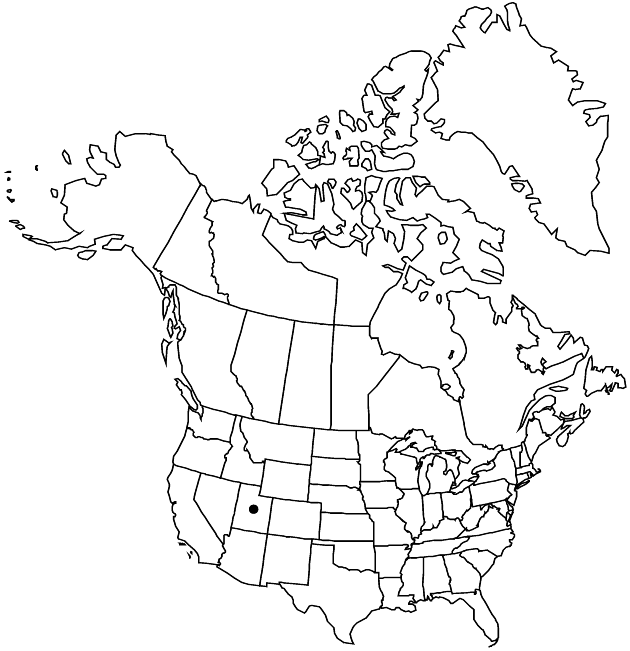Heliomeris soliceps
Proc. Indiana Acad. Sci. 88: 370. 1979.
Annuals, (2–) 10–30 (–40+) cm (taprooted). Stems strigillose. Leaves opposite (proximal) or alternate (distal); blades ovate to rhombic-ovate, 15–38 × 6–20+ mm, margins ciliate to 1/4 their lengths, hairs mostly less than 0.5 mm, faces hispid or strigose (abaxial not glanddotted). Heads 3–15+. Peduncles 7–28 cm, lengths 2–5 times leafy portions of stems. Involucres 7–10 mm diam. Phyllaries lanceolate, 5–6 mm. Paleae oblong, ca. 5 mm, cuspidate. Ray-florets 10–12; laminae ovate, 10–15 mm (glabrous). Disc-florets 25+; corollas 4 mm. Cypselae black or gray-striate, 2.8–3.3 mm.
Phenology: Flowering May–Jun.
Habitat: Gumbo clay knolls and bluffs
Elevation: 1400–1500 m
Discussion
Of conservation concern.
Heliomeris soliceps is characterized by the relatively long, scapiform peduncles rising beyond relatively short, leafy stems, and ovate to rhombic-ovate leaf blades that are relatively broader than those of most other members of the genus. Its blooming period is also significantly earlier than those of other members of Heliomeris. It is known from southern Utah, where it forms large populations.
Selected References
None.
Lower Taxa
"broader" is not a number."-5timesleafyportions" is not declared as a valid unit of measurement for this property.
